
ajafoto/iStock/Getty Images
Learning the specialized vocabulary for any new skill can be daunting, and baking is no exception. Cookbook authors and fellow enthusiasts blithely toss around arcane terms in English and French, a habit that's both maddening and intimidating for the uninitiated. Some of these terms -- such as "docking" -- refer to things that you already know about and do. For example, if you've ever poked a pie crust with a fork before baking it, that's a form of docking.
Docking Pie Crusts
As a rule, docking is a technique used to control or manage the way your goods puff when they're baked. In pie crust, for example, pricking your dough thoroughly with a fork provides dozens of tiny vent holes through which steam can escape. When you bake the crust, the holes prevent the steam from creating large puffy spots that leave an uneven surface. Aside from looking untidy, those balloon-like swellings can leave parts of your pie without enough filling or -- even worse -- create soft spots where the liquid's moisture can seep through and leave your crust doughy, rather than crisp.
Docking Puff Pastry
A basic pie dough isn't supposed to puff when it's baked, but other pastries are. That's especially true of puff pastry, which is rolled and folded to make hundreds of thin, flaky layers. When the pastry is baked, trapped steam forces those layers apart and puffs the dough dramatically, often 4 to 8 times its original height. Sometimes, though, you want the dough's crispness but not its height. When preparing those treats -- "Napoleons" or "mille-feuilles" are a typical example -- you'll dock the dough heavily to keep it flat. Not only does it let the steam escape, pricking the dough crimps the multiple layers of dough, sticking them together and inhibiting their rise.
The Basic Technique
A simple fork is the only tool you'll need to dock most doughs in home baking. With pie crust, it's usually best to mold the dough into your pan first, before you dock it. Otherwise, you're likely to squeeze many of the holes shut as you press the dough into place, defeating your own efforts. Your fork should go completely through the dough and touch the pan each time, creating an even pattern of holes on both the bottom and sides. Puff pastry is often baked on an open sheet, so it can be more practical simply to prick the whole sheet before you cut it. Professional bakers have a spiky, rolling "docking tool," but a patiently wielded fork is similarly effective.
Docking Breads
Breads and rolls also often require docking, though it takes a different form. In this case the goal isn't to discourage the bread's rise, but to shape and direct it. A loaf that expands too exuberantly in the oven will often crack and split, creating bulges that ruin the bread's symmetry. That's irritating at home but intolerable in a bakery, so bakers cope with it by docking -- slashing -- their loaves. Professionals use a tool called a "lame" in French, a flexible razor with a slightly bowed blade. You can replicate its effect at home with a sharp, thin-bladed knife, oiled or moistened with water to keep the dough from clinging as you slash the loaf.
Related Articles

How to Make Bread Chewy
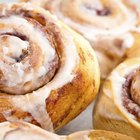
How to Cook Cinnamon Rolls in the ...

How to Bake Bread in the Oven
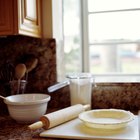
Tips on Keeping Pie Crust from ...

What Is the Difference Between a Bagel ...

How to Make Bread Tender
Can You Refrigerate Homemade Yeast ...

How to Make Scones

What Temperature to Cook Scones?

Can You Freeze Cornish Pasty?

Why Does Bread Drop in the Middle When ...
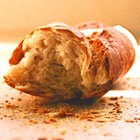
Differences Between French & Italian ...

How to Make a Tall Fluffy Cheesecake

How to Make Cannolis by Baking
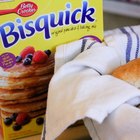
How to Make Bisquick Biscuits

What Are the Causes of Pie & Pastry ...
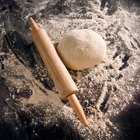
How to Preserve Dough That Has Risen
Why Are My Biscuits Always Flat?
Can I Store Biscuit Dough Overnight?
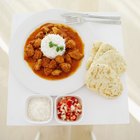
What Is Indian Flat Bread Called?
References
- The New Food Lover's Companion; Sharon Tyler Herbst, Ron Herbst
Writer Bio
Fred Decker is a trained chef and prolific freelance writer. In previous careers, he sold insurance and mutual funds, and was a longtime retailer. He was educated at Memorial University of Newfoundland and the Northern Alberta Institute of Technology. His articles have appeared on numerous home and garden sites including GoneOutdoors, TheNest and eHow.
Photo Credits
ajafoto/iStock/Getty Images